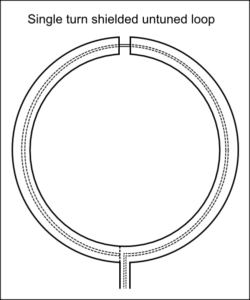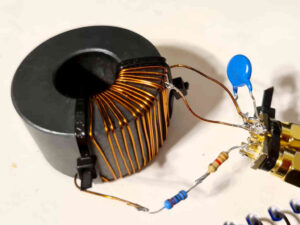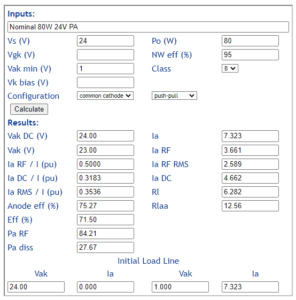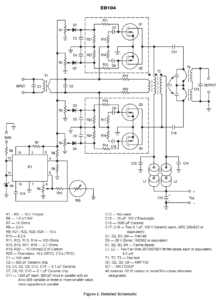I see online experts opine that small signal characteristics (eg complex permeability curves) of ferrite toroids are not valid for applications such as RF common mode choke in transmitting antennas.
Others opine that saturation is a practical design limit, and for example that Bs/2 is a safe / appropriate design target.
Let us consider a ferrite cored inductor at 7MHz. The inductor comprises 11t on a 11t on Fair-rite 5943003801 (FT240-43) toroid. This is a medium to high permeability ferrite material, and for that reason, has significant loss at HF. Higher and lower permeability materials are fashionable at different times, the higher permeability #31 mix is fashionable at this time.
I will work in MKS units.

Above is Fair-rite’s B-H curves for #43 material. Let’s take saturation flux density Bs to be 1500gauss or 0.15T. Continue reading Ferrite cored inductors at HF – flux, loss and saturation
Last update: 16th January, 2024, 7:44 PM







